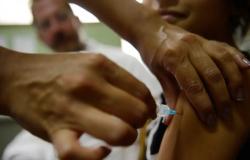“I was a child and a teenager who stayed at home. I was considered weird because I didn’t have that great ability to socialize. I always preferred playing video games to going out to talk to people I didn’t feel comfortable with”, recalls therapist and self-knowledge consultant Isis Paranhos, who says that she ended up growing up trying to change and fight against her own limits. Understanding her behavior, often seen as different from “normal”, only came as an adult, after being diagnosed with Autism Spectrum Disorder (ASD). “My life has improved absurdly, but it was quite a challenge at the time. And it was a very late diagnosis, I was 32 years old,” she says.
But identifying ASD was not the easiest task. In fact, the hypothesis that he could be on the autistic spectrum came from the therapist’s own perception. “I began to understand that I fit several characteristics when a high school friend’s brother was diagnosed. So I looked for information about this and ended up on TikTok to discover an autistic foreigner who shared several understandings about her life and, after that, I also found a Brazilian woman. From then on, I became more certain that being on the spectrum was not such a distant possibility,” she recalls.
Isis’s perception, however, came up against the prejudice and unpreparedness of the doctors she had sought. “The first of them, a psychiatrist, called me hysterical. He said it was all in my head, that I had no reason to be in such despair, that he would give me an antidepressant and it would be resolved,” she says.
The second experience, with a neurologist, followed a similar but even more disrespectful pattern. “He said it was silly to pursue this, that the person who had to worry about ASD was the mother of a 4-year-old boy, who doesn’t know if he will develop or not,” he recalls. The situation became even worse when it turned into harassment. “He told me to stop making up problems, because she was such a beautiful, educated and intelligent young woman. That he had no reason to ‘tarnish’ my reputation. I insisted that he give me an exam request and he did, but along with the request he gave me his personal telephone number. It was all so blatant that even I, who have difficulty perceiving these situations, managed to notice”, says Isis, referring to the characteristic difficulty of people on the autism spectrum in identifying subtle signs in communication and understanding social cues – a factor that affects, including, in romantic relationships and in flirting or flirting situations.
The negative experiences, however, did not stop Isis from seeking a third opinion. That’s how she started following, on social media, the case of another young woman who had recently received the diagnosis. “I saw when she talked about the psychoanalyst who treated her and helped her deal with some issues and I went looking for this professional. She was the one who cared for me for about eight months, in this process of reaching the diagnosis and confirming it.”
The reality experienced by the therapist – in a process that needed to start from her active and insistent search – reveals a problem: the difficulty in diagnosing Autism Spectrum Disorder in women. Behind this are numerous factors, ranging from the greater prevalence of the disease in men to the impacts of structural machismo in society. “Until 2020, the proportion among children with autism was that for every girl diagnosed, four boys had the same diagnosis. Some studies also indicate a greater predisposition to men due to genetic and biological factors. However, other studies also indicate that girls are underdiagnosed due to their greater social adaptability. Structural machismo, which demands greater sociability from women from childhood, and culminates in behavioral and emotional training from an early age, is also a factor”, explains João Gabriel Grabe, phenomenological-existential and autistic psychologist. “It’s different from what happens with boys, who have behaviors, especially aggressive conflict, that are more tolerated,” he adds.
Masking or “social camouflage” – terms that deal with the ability of a person with autism to adapt to the social environment, suppressing natural autistic traits to fit into social standards considered “normal” – is another issue that can also make autism less noticeable, especially at lighter levels. It is worth mentioning that this strategy, more common in women, involves an excessive expenditure of energy, as it is necessary to assimilate and learn behaviors considered “typical” to compensate and camouflage characteristics related to ASD – which actually leaves autistic people to feel completely exhausted. during or shortly after exposure to social situations.
The social appreciation of women who have a more restrained and shy personality is also another factor that can corroborate the lack of diagnosis, mainly because more closed behaviors can be encouraged as appropriate postures. In view of this, what could be considered a problem or a difficulty in socialization, comes to be understood as commendable behavior. “Many people say that it is not necessary for a woman to be very outgoing and that if she is more ‘in her own skin’, she is just shy. This is something that is well regarded in society”, highlights therapist Isis Paranhos. “Speech like ‘it’s good for a girl to be quieter’, ‘stay in her corner’ have always influenced me”, she says.
The family’s own understanding of children’s behavior can also influence the delay in discovering ASD. This is what João Gabriel explains. “When we think about late diagnosis, we turn our attention to current attitudes, but which have occurred since childhood and are considered ‘normal’ by the family. Being shy, not liking physical contact, not looking people in the eye, having problems with certain foods or textures, isolating oneself, playing completely alone, among many other behaviors, can be understood as natural or as a ‘strong personality’”, he exemplifies. . When there is good academic development and good social functioning, suffering can also go unnoticed or be silenced in the face of apparent “success”.
What are the main signs of Autism Spectrum Disorder?
According to the definition of the Federal Government’s Virtual Health Library, autism spectrum disorder (ASD) is a problem in neurological development that impairs the organization of thoughts, feelings and emotions.
Faced with this difficulty, the signs may end up varying in intensity in each person, and there may be some that are easily observable, such as the presence of stereotypical movements – which include repetitive behaviors such as swinging the hands in the air, moving back and forth or in a side to side for some time, among others. “However, the main characteristics according to the DSM-V (Diagnostic and Statistical Manual of Mental Disorders) are deficits in communication and social interactions, restricted and repetitive patterns of behavior in activities or interests – such as always wanting to eat the same food , follow the same path, or play with a type of toy. They are present from the early stages of a child’s development, causing social, professional or personal harm in adolescence and adulthood”, explains psychologist João Gabriel Grabe.
The professional also adds that other characteristics can also be observed during the development phase, such as echolalia, which is the repetition of words, sounds or phrases continuously; hyperfocus on specific subjects for a long or short time; rigidity in relation to changes (whether routine, environmental, or in relation to food); the difficulty in relating or maintaining relationships for a long time, and dietary restrictions due to textures, flavors or smells.
There are still other factors and signs characteristic of ASD, which will vary according to the level of the disorder and each individual. Therefore, the specialist advises that in case of doubt, the ideal is to seek out a psychology professional to construct the diagnostic hypothesis, who will, based on the clinical context, construct a way of acting in relation to the patient’s suffering and demands, mainly in relation to late diagnosis. “In child diagnosis, it is important to turn not only to a psychologist, but also to the school (teachers and those responsible for the classroom – to find out about the child’s day-to-day life), as well as doctors and other professionals who can also act and contribute to the monitoring and development of the child”.
—
THE TIME reinforces the commitment to quality, professional and Minas Gerais journalism. Our newsroom produces responsible information every day that you can trust.
Follow THE TIME on Facebook, on Twitter and on Instagram. Help grow our community.
Tags: Understand diagnosing autism women difficult
--





